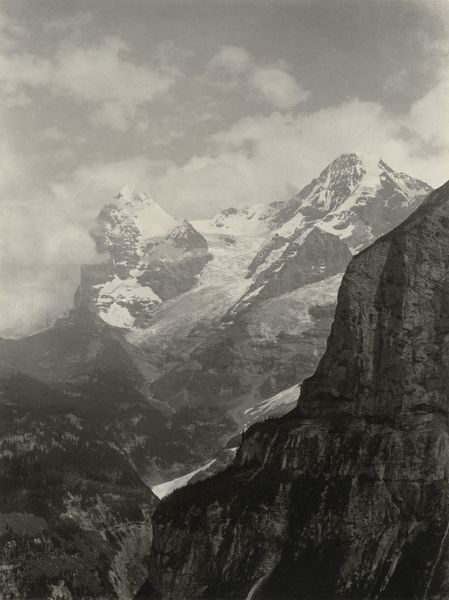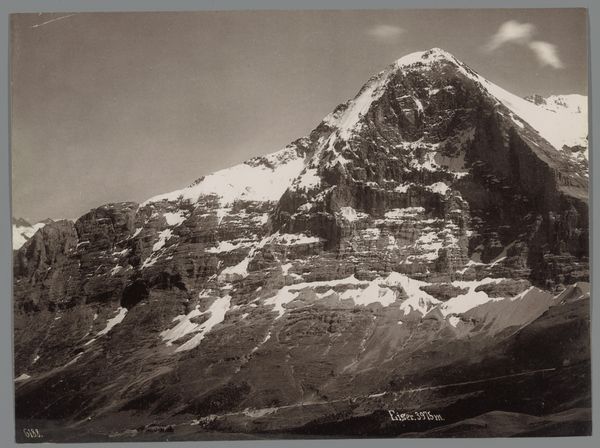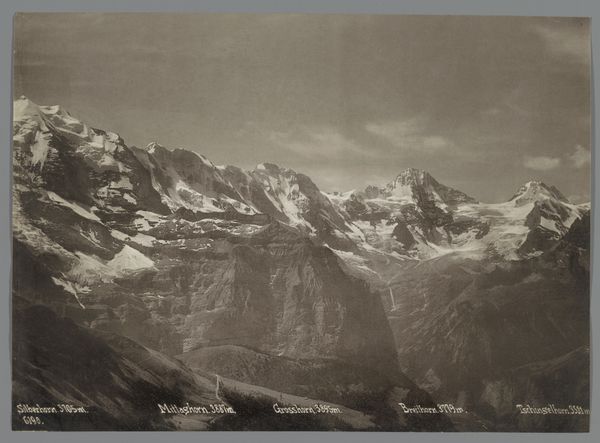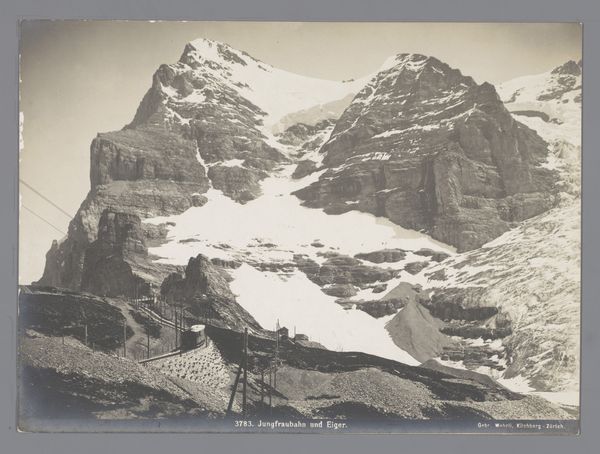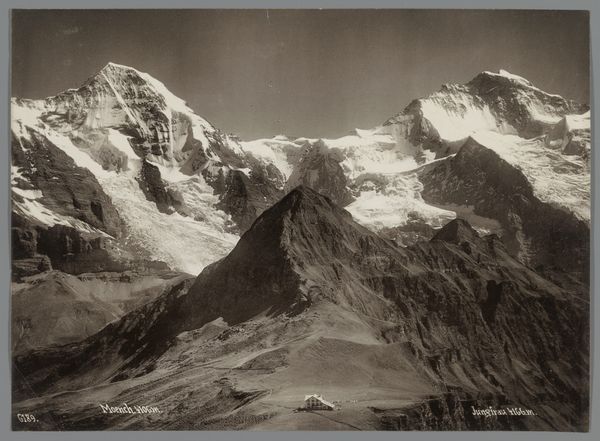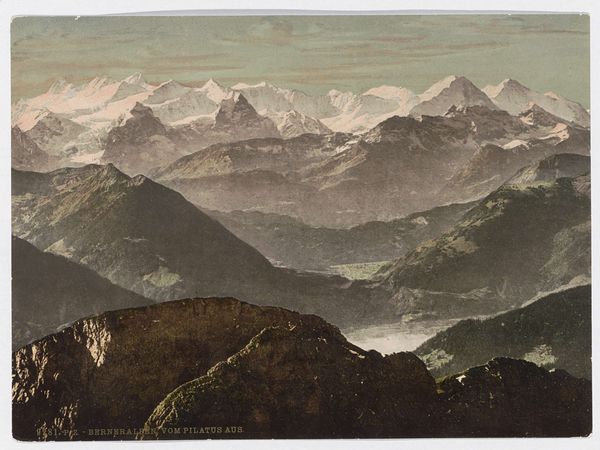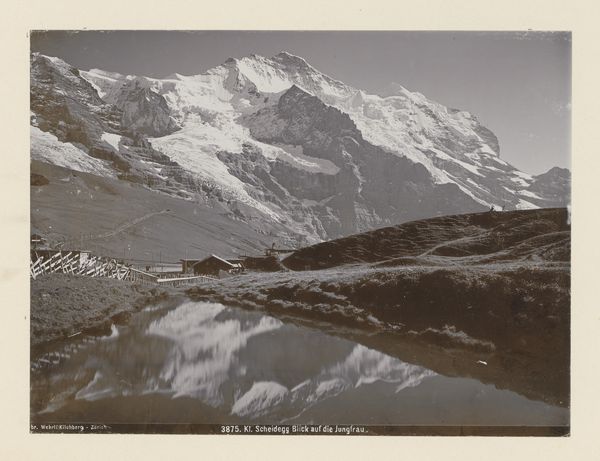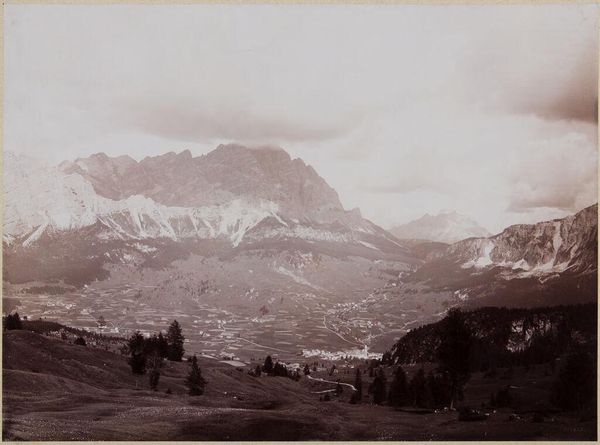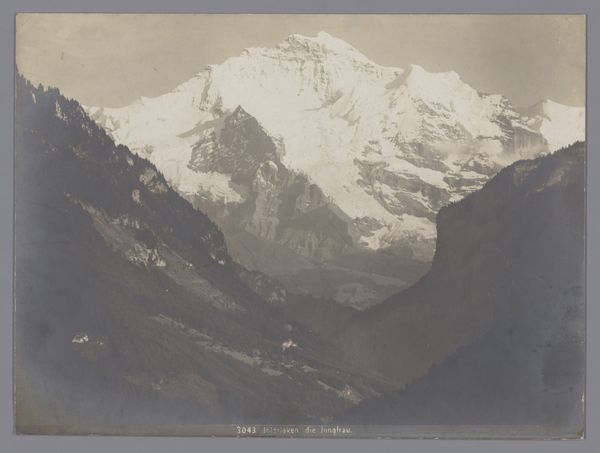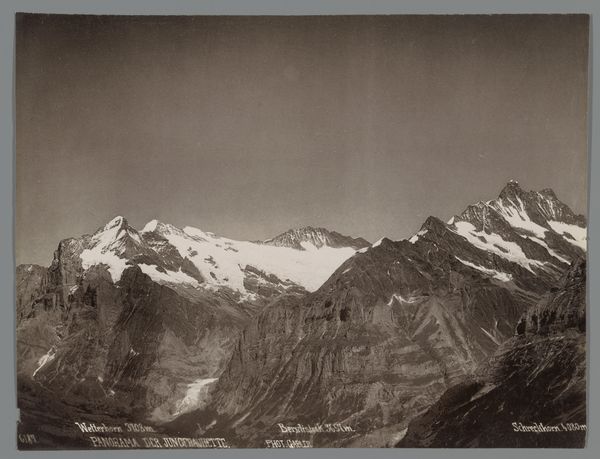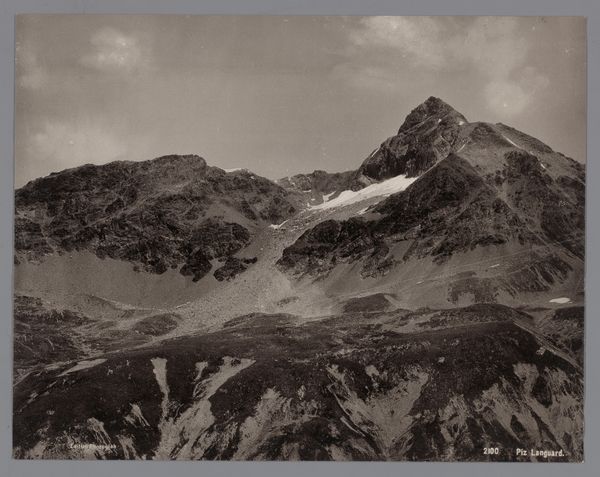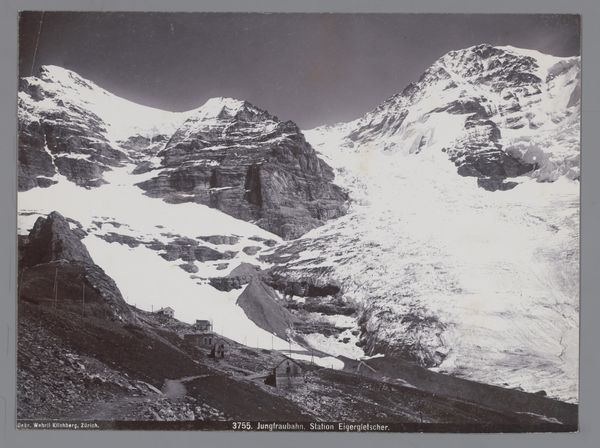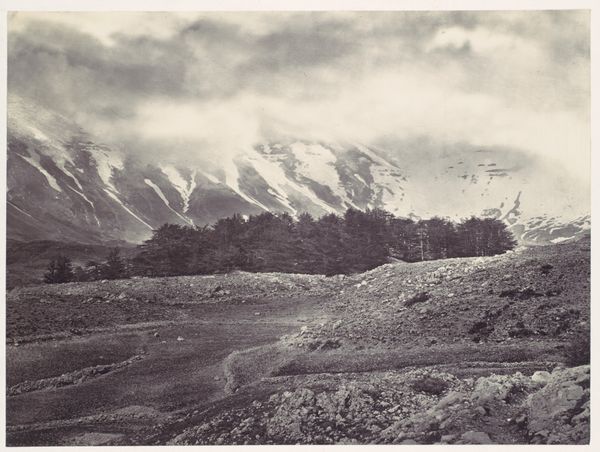
photography
#
landscape
#
photography
#
post-impressionism
#
mixed medium
#
mixed media
#
watercolor
Dimensions: height 258 mm, width 360 mm
Copyright: Rijks Museum: Open Domain
Curator: We’re standing before “Gezicht op Mürren met de Jungfrau, Mönch en de Eiger,” a photochrom print created around 1896-1897. Editor: It evokes a kind of quiet majesty, doesn't it? The immense mountains dwarf the village below, creating this striking contrast of scale. There’s an almost sublime sense of isolation. Curator: Indeed. The composition employs a masterful layering of space—the foreground’s verdant slopes gently guiding the eye toward the imposing, textured mountains in the background. The use of color here is also quite telling. Notice the pale, almost muted tones lending the work a certain romantic sensibility. Editor: I see it more as a deliberate act of framing. Tourism was booming during this era, and idealized landscapes like this one directly commodified the Swiss Alps, offering a picturesque, and perhaps exclusionary, version of Switzerland to a certain demographic of traveler. Who were these landscapes for, and whose stories were omitted in this romantic depiction of the Swiss countryside? Curator: A valid point. But, from a purely formal standpoint, the interplay between light and shadow models depth and texture to underscore the formidable structures themselves, with their snow-capped peaks dominating the horizon. The octagonal border adds an almost precious feeling. Editor: Yes, and I find myself wondering about the labour behind such picture-postcard images: Whose hands toiled to maintain these resort towns for wealthy visitors? There’s a socioeconomic dimension deeply embedded within even this seemingly serene landscape, raising critical questions about access, labor, and environmental exploitation, perhaps, connected with early tourism. Curator: Of course, appreciating such inherent social dimensions within visual culture enhances how we receive any landscape work. It is worth noting too, that even in what initially appears to be simple, harmonious balance of nature with constructed architecture, one must read into what is omitted. Editor: Precisely, viewing this piece through multiple lenses offers a fuller appreciation of its complexities. We are prompted to consider its historical, societal, and ecological consequences and meanings, and, hopefully, generate dialogue.
Comments
No comments
Be the first to comment and join the conversation on the ultimate creative platform.
